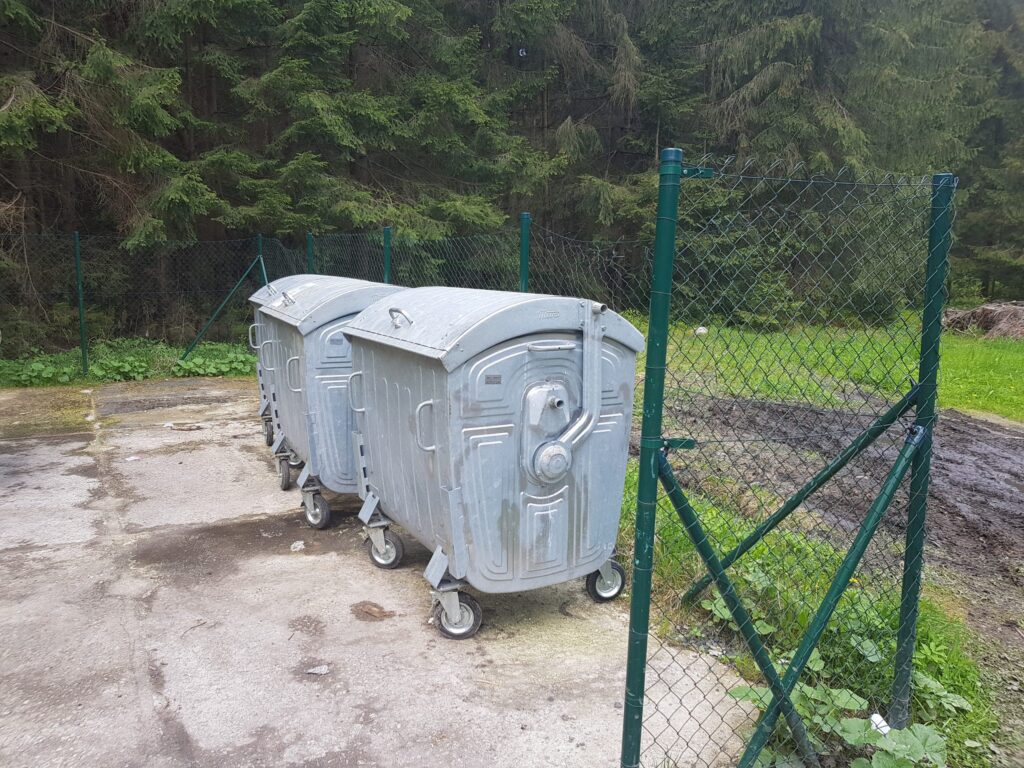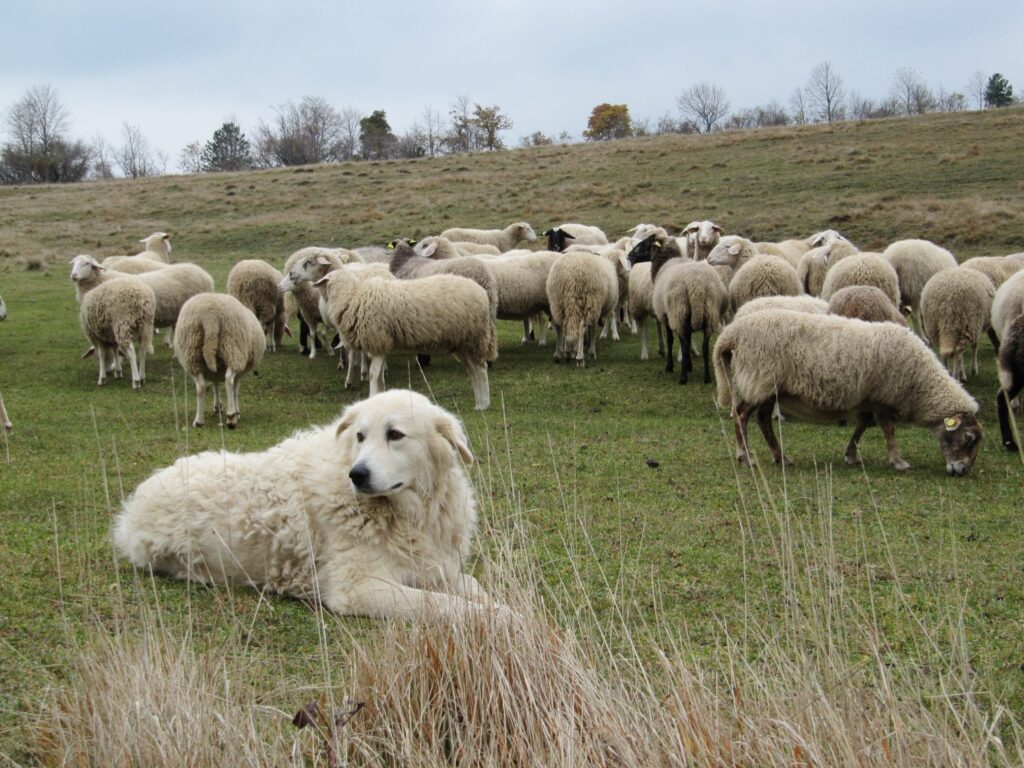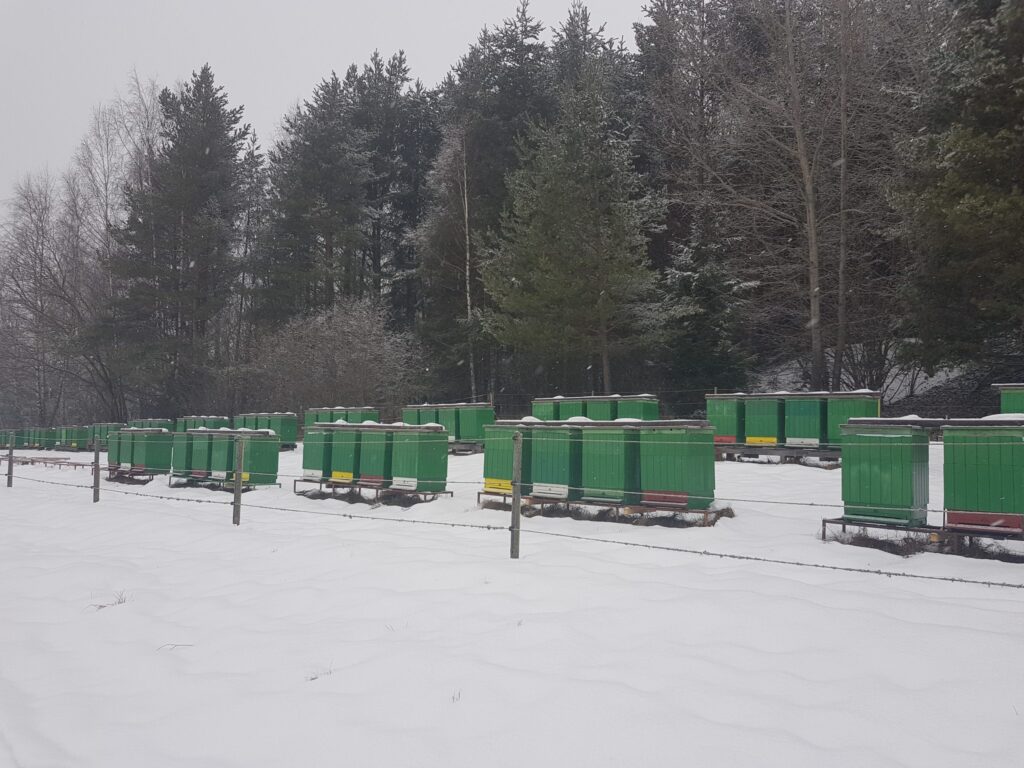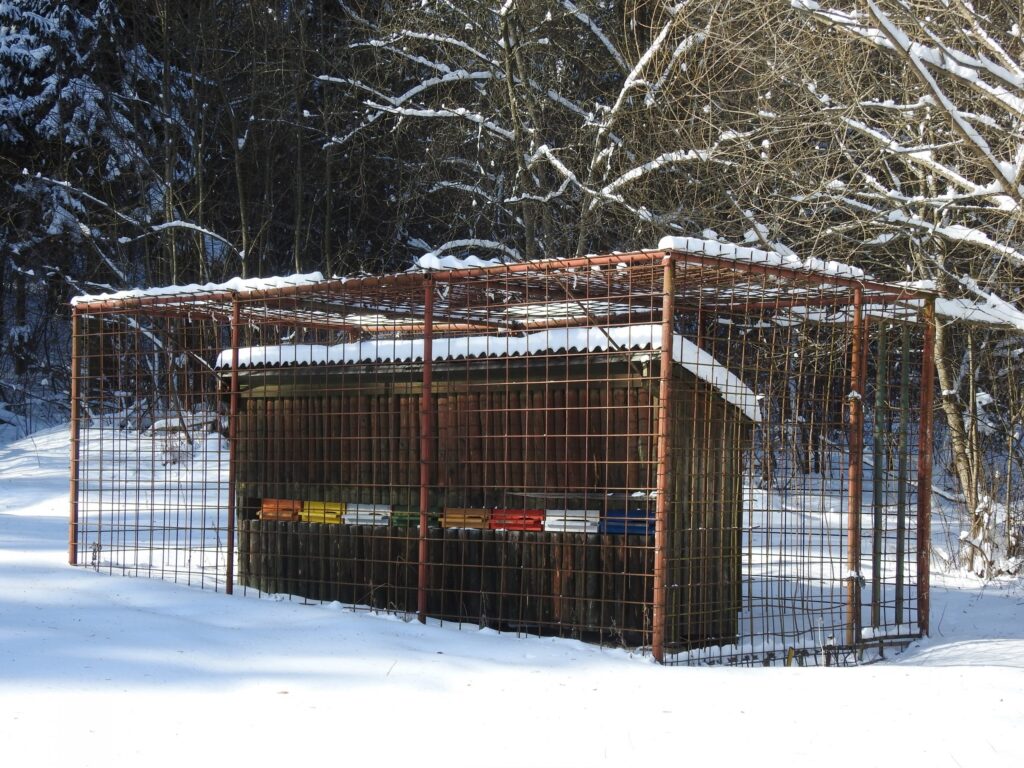Measures to eliminate problems, damage and to mitigate the risk of dangerous situations
Municipal waste management
Unsecured and easily accessible garbage with food scraps is an easy source of food for bears. Residents and local authorities should therefore play an active role in municipal waste management. It is especially important that the guidelines for municipal waste management in areas with brown bears are complied with. In accordance with Section 18 of Decree of the Ministry of the Environment No. 371/2015 Coll., holders of waste are obliged to secure waste (mixed municipal waste and biodegradable kitchen and restaurant waste) so that it is not accessible for brown bears. The waste shall be secured against brown bears’ access by placing the waste collection container in an enclosed area which is not freely accessible, or by using a lockable container or a container fitted with a different mechanism which prevents the access of brown bears to the waste.
-
Brown bear-proof containers
Source: Michal Haring
Waste securing options: see here [pdf]
Change in the growing of agricultural crops
Crops that have recently started to be grown in the areas populated by brown bears (especially corn in the foothill areas) have become an important component of the brown bear’s diet, resulting in the brown bears moving closer towards human dwellings, their increasing natality and a higher survival rate of brown bear cubs. One of the possible solutions to this problem is a consultation on crop rotation with competent experts, which could result in the agricultural crops growing pattern changes in the areas where brown bears naturally occur.
Hunting management of wild ruminants and wild boar
The massive feeding of game by hunters represents an additional source of energy-rich food for bears. Although the Slovak Act on hunting stipulates exact rules for the feeding and baiting of animals, these are not always followed in practice. In non-critical periods game should not be fed at all. If inappropriate feeding and baiting practices occur it is necessary to ensure stricter controls and resulting sanctions.
Livestock, bee colonies and agricultural crops protection methods
The most effective way of protecting and defending livestock from attacks by large carnivores (both grazing and browsing) is through the use of herding guard dogs. The effectiveness of this measure depends on a number of conditions (e.g. the dogs must be trained accordingly; they must not be chained, which may be an issue in areas with high human traffic, etc.).
-
Guard dogs used for herd protection
Source: https://www.innatura.info/transumanza-greggi-tratturi/transu-2/
Metal or wooden pens are mainly used to protect livestock at night. These represent a very effective method of protection especially when combined with electric fences. In this case, electric fences are installed at a sufficient distance (15 m) around the metal or wooden pens and herding guard dogs can run “at large” in the space between them. The disadvantage is that when the pen is moved elsewhere, the electric fence must be moved too.
Electric fencing is also used to protect bee colonies and agricultural crops. The effectiveness of the fence is influenced by its design (conductive ropes or wires) and the pulse source capacity (recommendations for bears are the pulse sources with 7J+ energy and a voltage of at least 6,000 V). Distances between the conductive ropes or wires is also important: it should not exceed 20 cm at the bottom of the fence (up to approximately 1.2 m above the ground) and 30 cm in the higher parts of the fence.
-
Electric fence
Source: Michal Haring
There are a number of other preventive measures which are used to partially or completely eliminate the damage caused by large animals, such as detection and deterrent devices which trigger sound and light alarms based on the signals received from sensors, automatic lighting, elevated platforms, metal-covered mobile trailers, etc.
-
Bee colonies protected by a metal structure
Source: Michal Haring
Sources:
Antal V., Kaštier P. & Čertíková M. 2015: Škody spôsobené veľkými šelmami, preventívne opatrenia na ich čiastočnú, resp. úplnú elimináciu a náhrady škôd. Pp.: 153 – 190. In: Lešová A. & Antal V. (eds.), Ochrana a manažment veľkých šeliem na Slovensku. Štátna ochrana prírody SR, Banská Bystrica.
Rigg R. 2015: Nebezpečné strety človeka s medveďom. Pp.: 191 – 195. In: Lešová A. & Antal V. (eds.), Ochrana a manažment veľkých šeliem na Slovensku. Štátna ochrana prírody SR, Banská Bystrica.




